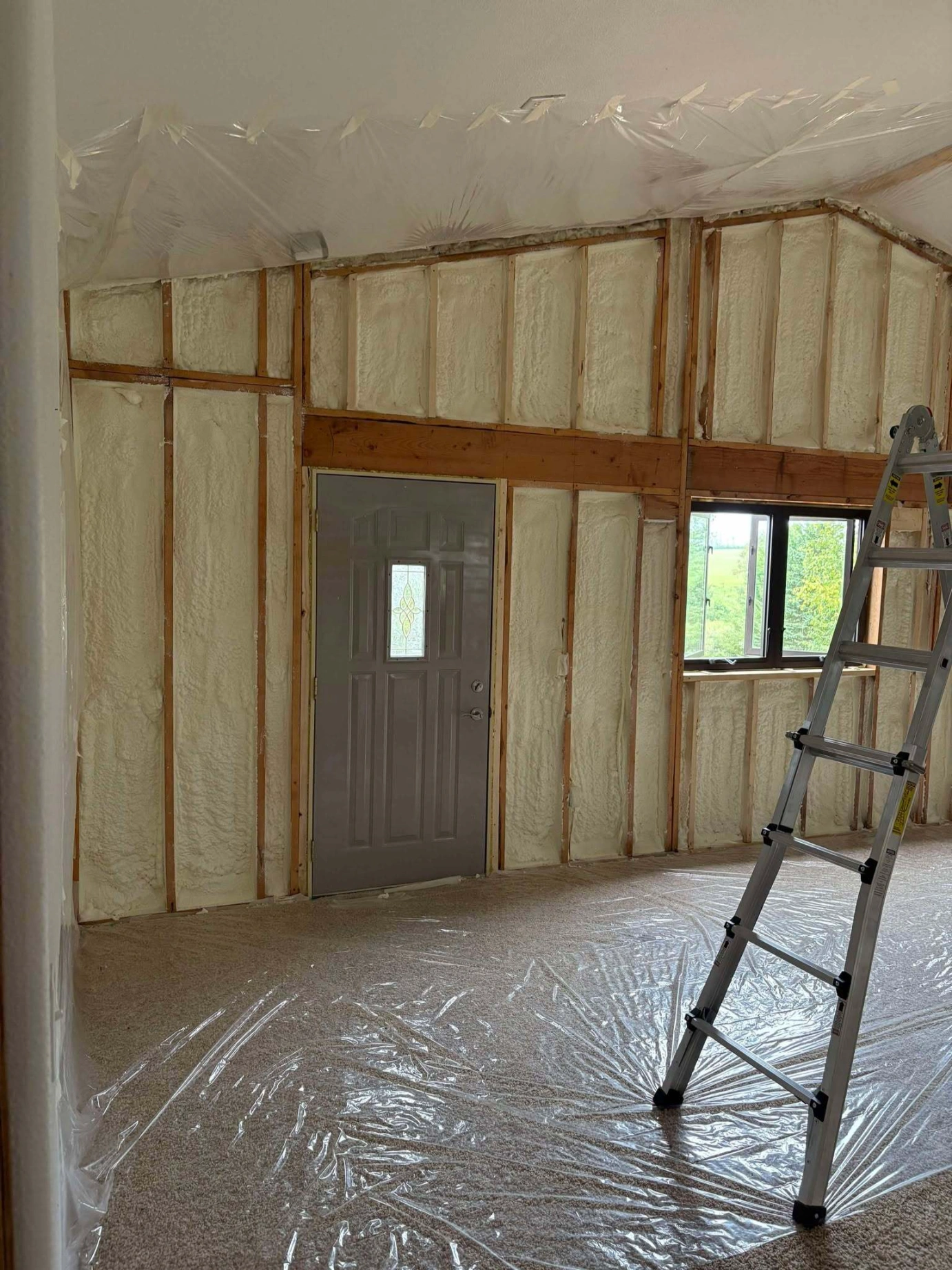Spray foam insulation, when applied correctly, can last the entire lifetime of a building. On average, both open-cell and closed-cell spray foam types maintain performance for 30 to 80 years without significant degradation. The longevity depends on environmental exposure, installation quality, and usage conditions.
Foam Worx Insulation has seen closed-cell applications retain structural integrity and insulation value for decades in Minnesota’s extreme weather cycles. The material doesn’t sag, settle, or break down like traditional batt or blown-in insulation. This article outlines technical data, real-world performance, and key factors that impact lifespan.
Types of Spray Foam and Longevity Factors
Expected Lifespan by Foam Type
| Foam Type | Average Lifespan | Best Use Cases | Moisture Resistance | Structural Rigidity |
|---|---|---|---|---|
| Closed-Cell | 60-80 years | Walls, roofs, foundations | High | High |
| Open-Cell | 30-50 years | Interior walls, sound control areas | Moderate | Low |
Performance Factors That Affect Lifespan
- Installation quality: Improper application can trap moisture or leave gaps.
- UV exposure: Prolonged direct sunlight degrades exposed foam.
- Moisture control: High humidity or leaks can shorten open-cell foam lifespan.
- Surface preparation: Unclean or unstable substrates reduce adhesion.
- Climate: Minnesota’s freeze-thaw cycles require materials that resist thermal contraction and expansion.
Bonus Tip: In agricultural or unconditioned spaces, closed-cell foam performs better due to its vapor barrier properties and denser structure.
Material and Performance Specifications
| Specification | Closed-Cell Foam | Open-Cell Foam |
|---|---|---|
| R-Value (per inch) | 6.0 to 7.0 | 3.5 to 4.0 |
| Vapor Barrier | Yes | No |
| Air Seal Capability | Excellent | Good |
| Water Resistance | Impermeable | Semi-permeable |
| Density | ~2.0 lbs/ft³ | ~0.5 lbs/ft³ |
| Compression Strength | 25 psi | 4-5 psi |
| Typical Application Thickness | 2-3 inches (walls) | 3-5 inches (walls) |
| Thermal Drift Over Time | Minimal (<2%) | Slight (up to 5%) |
Practical Insights from Field Use
Closed-cell foam has maintained airtight seals in commercial roofs and pole barn walls for over 25 years with no measurable decline in performance. In colder climates like southern Minnesota, it also helps control indoor moisture levels better than other materials.
Open-cell foam is more sensitive to moisture, making it better suited to interior applications where humidity is controlled. When installed with intumescent paint, fire protection is enhanced without sacrificing insulation performance.
According to the U.S. Department of Energy, buildings lose up to 30% of energy due to air leaks. Spray foam effectively seals these points, reducing HVAC load and extending equipment lifespan (source).
Bonus Tip: For attic retrofits, combine closed-cell spray foam with blown-in insulation to maximize thermal retention while minimizing retrofit complexity.
Things to Think Through Before Choosing Spray Foam
- Location of installation: Crawl spaces and basements benefit more from closed-cell foam. Open-cell is ideal for sound dampening inside walls.
- Ventilation systems: Air-sealing properties require balanced ventilation to prevent trapped moisture.
- Building age: Older buildings may need reinforcement or substrate conditioning before application.
- Fire code compliance: Intumescent coatings may be required in exposed foam installations.
- Retrofit or new build: Closed-cell suits retrofits due to lower expansion pressure and higher adhesion.
Bonus Tip: Always request a thermal performance test post-installation. It confirms uniform coverage and verifies effective air sealing.

Related Services Provided by Foam Worx Insulation
- Closed-Cell Spray Foam: High-density insulation that strengthens structures and seals air leaks.
- Blown-In Attic Insulation: Loose-fill material ideal for attics and overhead cavities in retrofits.
- Intumescent Paint: Fire-resistant coating often required over exposed spray foam in commercial spaces.
- Agricultural Insulation: Solutions for barns, pole buildings, and animal shelters needing moisture and temperature control.
Quick Answers to Common Questions Before Installation
Does spray foam ever need to be replaced?
Only in cases of water damage, physical impact, or poor original installation.
Can spray foam degrade in cold climates?
Not if properly installed. Closed-cell foam remains stable in sub-zero temperatures.
Is reapplication necessary after 20 years?
No reapplication is needed unless the foam was compromised by damage or renovation.
Can I apply spray foam over existing insulation?
In some cases, yes. A professional inspection will confirm compatibility.
Should I use open-cell or closed-cell in the attic?
Closed-cell offers better moisture resistance, making it more reliable for attics in cold climates.
Final Thoughts on Spray Foam Lifespan
Spray foam insulation is long-lasting and requires minimal upkeep. Closed-cell options can perform for 60 years or more under harsh conditions, while open-cell serves reliably in protected interior areas. Installation quality and use conditions remain the key variables.
For buildings in Minnesota and similar climates, selecting the right type and ensuring correct application ensures performance for decades.
Need Reliable Long-Term Insulation?
Foam Worx Insulation helps property owners install spray foam solutions designed for long-term performance. Reach out with questions or to schedule an assessment at (507) 407-6688 or [email protected].
Long-Term Considerations for Existing Installations
How to tell if spray foam is failing
- Visible cracks or gaps
- Soft, powdery texture indicating UV or moisture damage
- Persistent drafts or elevated energy bills
Can spray foam trap moisture inside walls?
Only if improperly installed or without vapor control layers. Closed-cell prevents most moisture penetration.
How do I maintain existing spray foam insulation?
No active maintenance is needed. Annual visual inspections help catch rare issues early.
Is there any off-gassing over time?
Off-gassing occurs during initial curing only. Certified materials meet low-emission standards post-installation.
What about pest resistance?
Spray foam doesn’t attract rodents or insects, but it won’t repel them entirely either. Combine with sealing measures.




